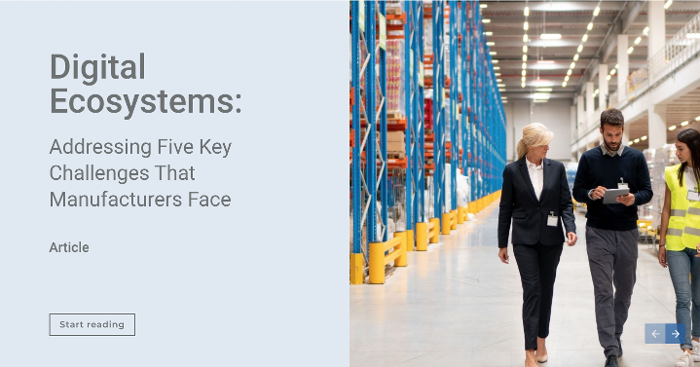The manufacturing world is restarting after the economic havoc caused by the pandemic, but production processes can’t be restarted overnight. Particularly when they’re reliant on other manufacturers restarting their production processes to make necessary components. As this happens, preventing waste will be absolutely critical. Lean manufacturing processes are needed now, more than ever, to help speed up recovery in the wake of the outbreak. Investing in data-driven Industry 4.0 processes and upgrades now can help achieve those lean processes, while also paying off for years to come with improved manufacturing efficiency.
Speeding Up Manufacturing Recovery
Industry 4.0 initiatives revolve around two key interconnected concepts: data-based processes, and use of smart AI/robotics.
Today, we have computer systems capable of overseeing manufacturing processes with a level of speed and accuracy that’s well beyond any human overseer. For example, computer systems at a factory can monitor the pressure inside a thousand valves simultaneously, while noticing and reporting even the slightest deviation from expected standards. When paired with robotic machinery capable of manipulating those valves, the computers can effectively run the operation – while all the human managers have to do is keep an eye on those computers, rather than an entire factory.
This same principle applies to nearly any part of a manufacturing operation. With enough sensors, virtually any aspect of production can be monitored by smart AI systems. This data can then be fed into robotics that do the “hands-on” work more effectively than human workers.
This enables lean manufacturing at scales and efficiency which would have been impossible just thirty years ago.
- Product quality and QC can be maintained at higher levels than ever, because the systems monitoring the products can be set to higher levels of precision.
- Maintenance issues in the production pipeline won’t go overlooked, or ignored, because they’ll be constantly reported on. Maintenance problems can even be avoided, thanks to early warning.
- There will be less waste in the production line, with fewer bad batches or rejected product.
- Facilities based around these principles don’t have to be designed to accommodate dozens or hundreds of human workers, freeing up large amounts of floor space for additional production capacity.
- Displaced workers can be put to more meaningful work in other sectors, while the low-level labor is handled by robots – robots which will be more effective than those workers.
- Production rates can be more easily scaled up and down, when workforce pressures and scheduling aren’t a factor in the decision-making process.
Over time, we will likely even see partner organizations linking their systems together, so that they can work together to serve each others’ needs more efficiently. The day may come soon that extended ecosystems may be able to collaborate to minmax production automatically. When Partner A needs more of a component from Partner B, A simply submits the request and B’s systems increase production to match. Minimal human interaction would even be necessary.
These improvements would be great news for industry in any situation – but they’ll be especially vital in the next couple years, as companies struggle to ramp back up to full production. Investments in Industry 4.0 processes now, when the workload is already disrupted, will pay off almost immediately for businesses willing to take the plunge.

